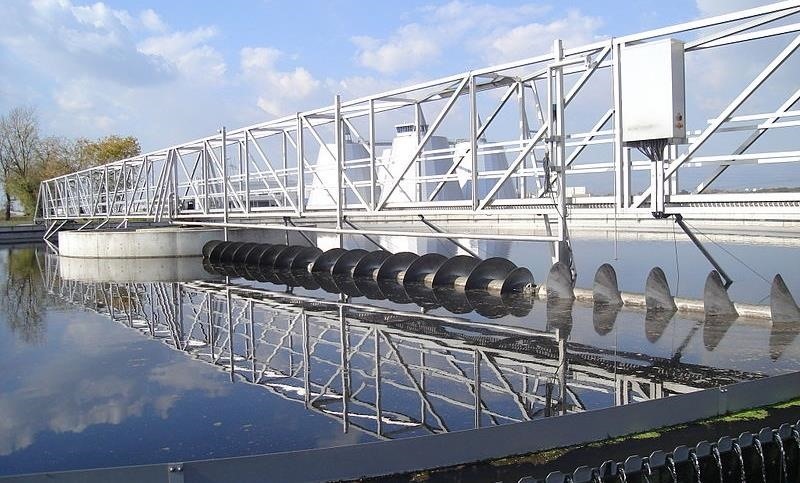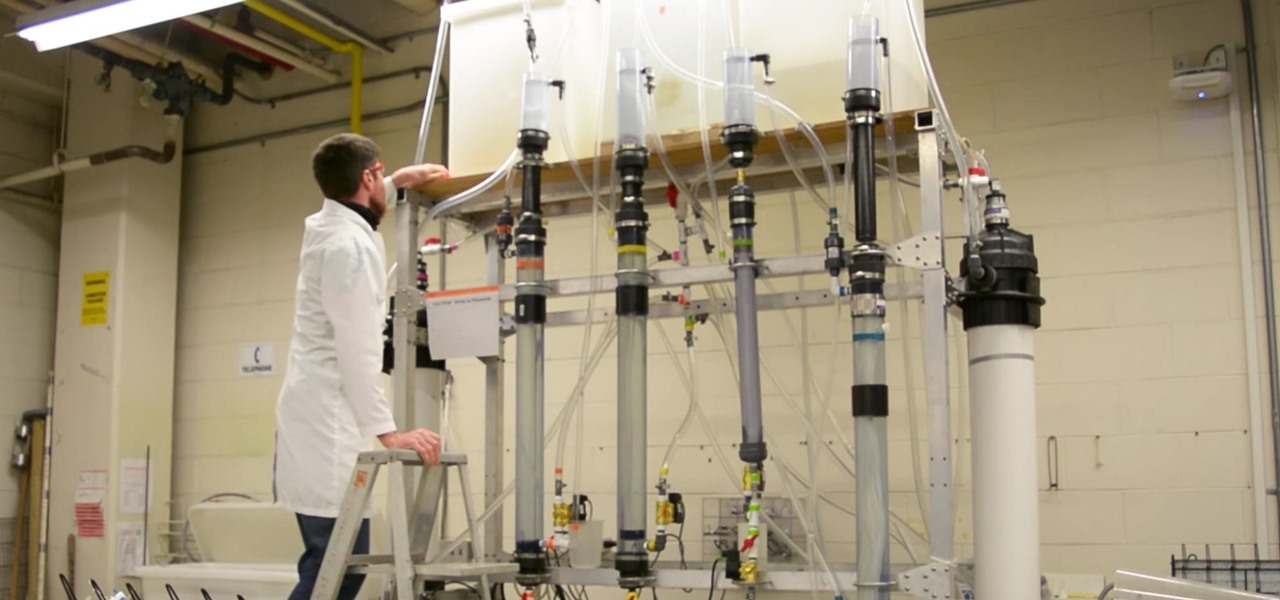Water makes up about 60% of your body weight. Whether you like it plain, flavored, bubbly, or in beverages or food, we all need water daily to avoid dehydration and stay healthy. For communities in need of clean drinking water, new research using bacteria may offer a simplified, lower-cost method for boosting potable water supplies.
The study, published in the journal Water Research, describes a water treatment process that uses some of the components of standard wastewater treatment but costs less to operate and maintain.
In conventional municipal wastewater treatment facilities, wastewater moves through several levels of filtration before discharging the water into rivers, streams, or other bodies of water. Bacteria are part of that process.
Think of wastewater treatment as a series of different methods — mechanical, biological, and chemical — that work to remove contaminants from the water you drink and use. Water flows in dirty and comes out mostly clean.

Initial water treatment filters out debris and solids with coarse filters designed to catch large particles. Next, the water is slowed and more debris is allowed to settle down into the bottom of a treatment tank. Eventually, air, wastewater, and bacteria-loaded sludge are mixed to allow beneficial microorganisms to eat pathogens, pollutants, and other organic particles in the water. Late in the process, wastewater is chemically treated to kill pathogens and disinfect the water, which is then released into waterways.
In the study, researched by scientists in the Department of Civil Engineering at the University of British Columbia (UBC), they wanted to create an effective wastewater treatment process using a lower-maintenance and less expensive process that could be sustainable in rural communities without dedicated maintenance personnel and fewer resources.
Turning to passive filtration, the team developed a system that uses tanks with several levels of fiber filters, along with gravity and air, to create an efficient, low-resource filtration process. Passive filtration, like the process of a septic tank and drain field, uses less energy to move water through the system.
The researchers created a prototype to systematically assess the need for treatment steps, including:
- Backwashing: Many treatment facilities run treated water backward through filter media to better strip pollutants and contaminants from treated water.
- Air sparging: Using air as part of the water treatment process is called sparging, and it is essentially bubble aeration. Aeration lifts and circulates water and tumbles out particulate.
- Chemical treatment: Chemicals used throughout the treatment process help dissolved pollutants become solid and settle out of the water. They also slow down overgrowth of bacteria, and ultimately disinfect water and clean filters used throughout the process.
Ultimately, the team was able to build a system that eliminates backwashing, chemical cleaning, and dramatically reduces air-sparging — saving labor, space, and energy. Pierre Bérubé, a professor at UBC and project lead in the study, noted in a press release that their "membrane treatment can remove over 99.99% of contaminants, making them ideal for making drinking water."
The system is built to boost the capabilities of microorganisms to grow and form communities on the membrane surfaces (seen in the picture below as the thin vertical-running filaments in the tubes). Bacteria multiply and consume and break down organic material that flows through in wastewater. This process is called biodegradation. In this study, microbial communities were allowed to naturally colonize the filtering membranes.

While the use of bacteria is not novel in wastewater treatment, the minimized approach developed by UBC could be used to provide clean, safe, drinking for populations pressed for funds to build and run industrial wastewater treatment facilities. In this study, microbial communities were allowed to naturally colonize the filtering membranes.
Keeping membranes porous for water flow-through is important. The team incorporated periodic aeration, or sparging, to keep particulate moving, and reduce fouling of the membranes on which the bacteria grow. The study authors also wrote:
Although not required for sustained operation, chemical cleaning using sodium hypochlorite could effectively recover all of the permeability, returning the membrane to virgin-like conditions.
According to Bérubé, in the press release:
Our system is the first to use gravity to scour and remove captured contaminants, which otherwise accumulate and clog the membrane. It's low-maintenance and as efficient as conventional approaches that need chemicals and complex mechanical systems to keep the membranes clean.
The biofilm also helps by essentially eating away at the captured contaminants. You just open and close a few valves every 24 hours in order to 'lift' the water and let gravity and biology do their thing. This means significant savings in time and money over the lifetime of the system.
Next up for the treatment system is a try-out in West Vancouver, which is not far from UBC. Success in that municipal area will lead to testing and possibly installation of scaled-up systems in rural communities in British Columbia and other localities.

Clean water is essential to human health and wastewater is just one of the areas in which beneficial bacteria help out.
"Access to clean drinking water is a constant challenge for millions of people around the world. Our goal is to provide a model for low-cost, effective water treatment for communities, and to help locals help themselves as they build, operate and even expand their water treatment plants," said Bérubé, emphasizing the importance of the project.
Just updated your iPhone? You'll find new emoji, enhanced security, podcast transcripts, Apple Cash virtual numbers, and other useful features. There are even new additions hidden within Safari. Find out what's new and changed on your iPhone with the iOS 17.4 update.


























Be the First to Comment
Share Your Thoughts